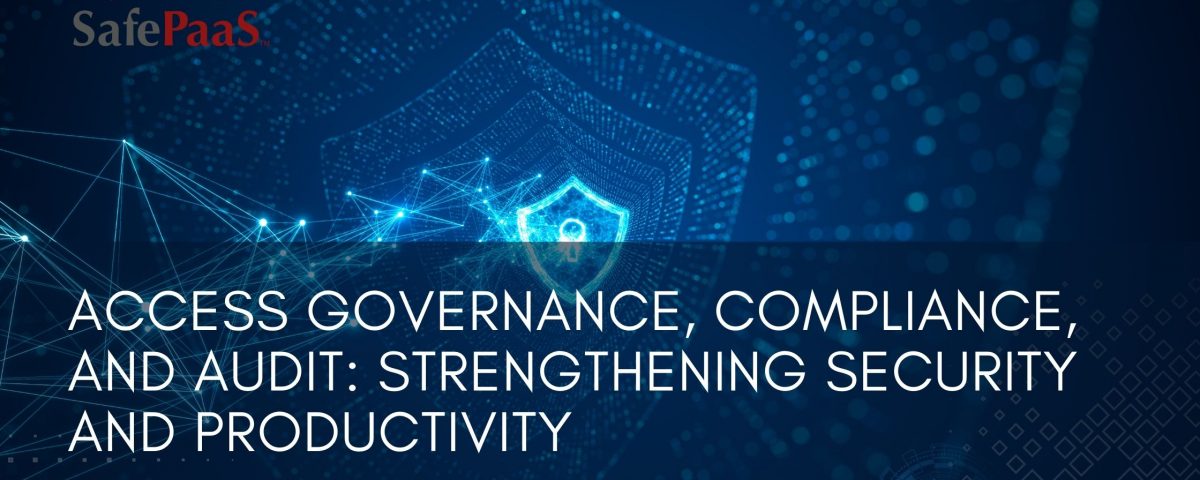Access Governance, Compliance, and Audit


Access Governance, Compliance, and Audit:
Strengthening Security and Productivity
Effective control of access rights for users, devices, bots, and services has been a longstanding challenge for organizations of all sizes and across industries. The goal of access governance is to boost productivity while mitigating potential security risks. Moreover, maintaining a clear view of who holds access to specific digital assets and verifying the legitimacy of that access within compliance guidelines presents another hurdle.
Traditionally, organizations have leaned on manual processes to assign permissions to users and identities. This often involves individuals reaching out through emails or other means to request access. However, these manual processes have limitations in terms of scalability and accuracy. To further compound the pressure on IT, organizations have also come to rely on manual periodic audits of access rules, entitlements, permissions, roles, and policies.
Moreover, the intricate and time-consuming nature of access reviews, coupled with a lack of essential context, interferes with reviewers' ability to make informed decisions about a user's access. This lack of clarity often compels organizations to adopt a "rubber stamp" approval approach, resulting in broad approvals that fail to revoke overprivileged users. These issues collectively hinder your organization from minimizing or eliminating the access risk and, ultimately, compliance.
This is where access governance can become your biggest ally in compliance and audit processes. In the fourth installment of our blog series "Top Five Access Governance Google Searches - Answered," we'll delve into the significance of access governance in compliance and audit, highlighting their importance and recommending best practices.
Enhancing Security and Productivity with Comprehensive Access Governance
To harness advanced access governance capabilities, your organization should explore solutions offering flexible access control measures to enhance productivity. These solutions should integrate real-time features like prescriptive analytics to detect anomalies and effectively address security risks. By assessing and implementing these solutions, your organization can fortify its security measures and streamline identity governance processes.
Look for a solution that provides various provisioning methods, such as access requests and approvals, attribute-based access control, and policy-based access control. This offers deep visibility into access permissions across your entire enterprise.
The Crucial Role of Access Governance in Compliance and Audit
Compliance and audit are integral components of access governance, ensuring that your organization's access policies and practices adhere to regulations, internal standards, and industry best practices. Let's explore access governance’s role in compliance and audit in more detail:
1. Regulatory Compliance
Various industries and regions have strict regulations for data protection and access controls. For instance, the European Union's General Data Protection Regulation (GDPR) or the Health Insurance Portability and Accountability Act (HIPAA) in the healthcare sector. Failing to comply with these regulations can lead to harsh penalties.
Compliance ensures that your access governance practices align with these regulations. This involves:
Policy alignment: Developing access policies that meet the requirements of relevant regulations.
Data classification: Categorizing data based on sensitivity and ensuring appropriate access controls.
Record-keeping: Maintaining records of access requests, approvals, and reviews for auditing purposes.
2. Industry Standards
Many industries have established best practices and standards for access governance to improve security and data protection. Adhering to these standards can not only improve your organization's security posture but also strengthen its reputation. For example, your organization may follow ISO 27001, which provides a framework for information security management.
Audit processes help guarantee that access governance practices meet industry standards. This involves:
Regular assessments: Periodic evaluations of access governance against industry-specific benchmarks.
Continuous improvement: Adapting access policies and controls to evolving industry standards.
Certifications and validations: Seeking third-party certifications to showcase compliance with industry standards.
3. Auditing and Reporting
Audit processes are critical in verifying that your access governance practices function as intended. This includes:
Access reviews: Periodic evaluations of user access to identify unauthorized or risky permissions.
Logging and monitoring: Recording and analyzing access-related events and incidents.
Incident response: Implementing procedures and workflows for addressing breaches or non-compliance promptly.
Reporting and documentation: Providing transparent records of access governance activities for internal and external audits.
Top 5 Access Governance Capabilities for Compliance and Audit
To effectively manage your compliance and audit obligations, the following best practices and capabilities are critical:
1. Automated Access Reviews: Leverage technology to automate your access certifications and reviews to make the process more efficient and accurate.
2. Centralized Audit Vault: Look for a solution to implement centralized compliance and audit documentation and monitoring to ensure that all access-related events are captured, analyzed, and remediated.
3. Incident Response Plan: Ensure your solution has workflow notifications to alert managers in the event of an incident to address breaches or non-compliance promptly.
4. Simplified Self-service: Look for a solution that offers self-service options that enable users to request access bundles or roles, whether for themselves or on behalf of others. This simplified process boosts efficiency and encourages users to actively engage in access governance tasks.
5. Stay Protected: Ensure your access governance solution provider stays informed about changes in regulations and industry standards that may impact access governance.
Strong access governance solutions facilitate the automation of your access control, enhancing visibility and decision-making while aligning your compliance objectives. By incorporating a cloud-native service, your organization can expand its existing compliance and audit capabilities, enabling you to delve into more profound access insights.
Compliance and audit processes are essential for ensuring your access governance practices align with regulatory requirements and industry standards. By following best practices and implementing a strong access governance solution, your organization can enhance security, build trust with stakeholders, and protect its valuable data.
Recommended Resources

The Power of Policy-based Access Governance
Learn why role-based access governance falls short of "true" governance and how policy-based access governance is designed to address these shortcomings.

How Acccess Governance fits into Cyber Security
Access governance is a pillar of cybersecurity. It plays a key role in effectively managing user access, strengthening the protection of sensitive data, and ensuring compliance. By implementing best practices and effective solutions, your organization can substantially mitigate the risks of unauthorized access and data breaches while safeguarding your digital assets.

Access Governance vs Access Management
In an age where information is the currency of the digital world, your organization must protect its data and ensure it's accessible to the right people. You have a dual objective in this regard, and it's where the concepts of Access Governance and Access Management come into play. While these terms may seem interchangeable, they represent distinct yet interrelated aspects of your organization's security and data management strategy.

